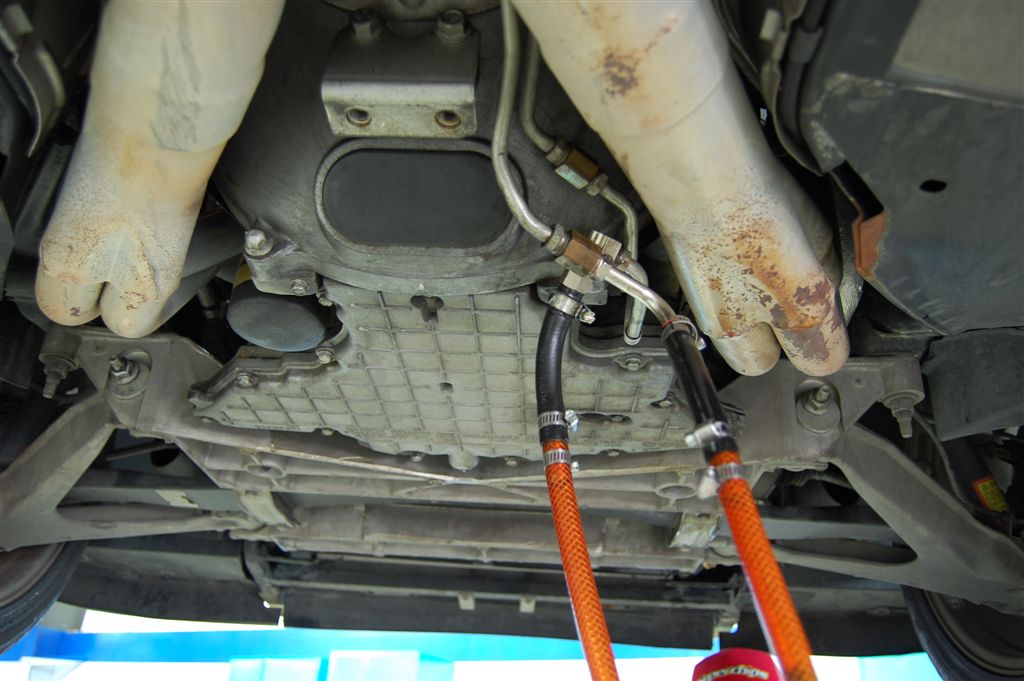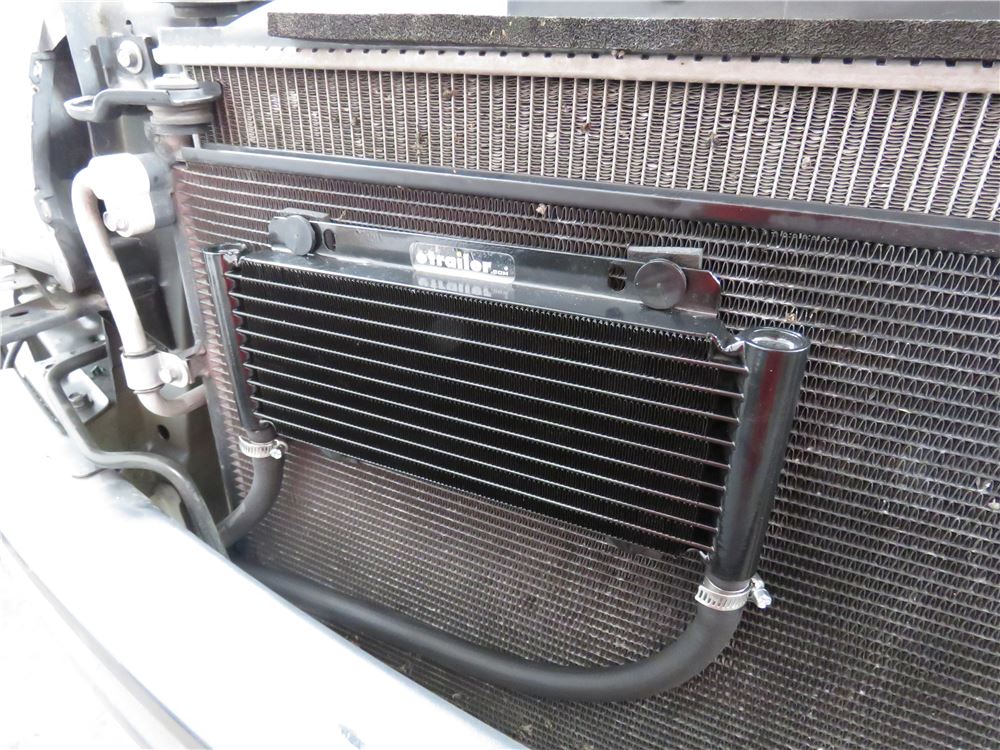

(1) Stainless Steel Hardware Bag w/ Serrated Nylock Nutsīegin by removing the plastic clips that hold the front cooling plate on.(1) Billet Transmission Distribution Block *Anodized Black*.Some shops use transmission service equipment that can replace the fluid without dropping the transmission pan. (1) Transmission Cooler Line Bracket Set Changing the automatic transmission fluid in a Corvette requires dropping, or removing, the oil pan.Inlet size: -10AN o-ring female x -6AN male.Transmission cooler lines are constructed of stainless steel braided PTFE line and finished with a protective coating. The included core is a 16 row stacked plate cooler which is designed to withstand high fluid pressures and significantly reduce transmission fluid temperatures with minimal pressure loss. I centered the cooler on top of the 2 bars and used the holes on the aluminum supports on the cooler to insert 4 10 machine screws (3' long with lock washers), carefully pushing around the fins of the cooler. Here, well take a look at some of the cooler and stranger Corvette-based machines, beginning. I bought two steel flat bars (3/16' X 1 1/2' X 36') and measured the front of the radiator core (from where the lip rises on both sides) and cut the flat bars down to 29 1/4'. These creations vary from mild to wild, with some even opting to completely re-body the fiberglass sports car to make it look like its own unique entity. Our CVT cooler kit includes everything needed to install. Chevys Corvette has served as the base for countless custom builds over the years, and continues to do so to this very day. Transmission fluid acts as both a coolant and lubricant, so when it starts disappearing from the system, you’ve got problems.Maintaining proper fluid temperature is essential to extending and preserving the life your CVT. Broken transmission lines mean transmission fluid leaks, and that means that your transmission will soon be operating without enough fluid. Poor transmisison performance will surely get your attention. Time to check in on the transmission lines and see if they’re doing alright. But if you’re able to check your transmission fluid leve and notice that it’s lower than it should be, then you’ve got a leak somewhere in the system. Many new cars don’t have a transmission dipstick, unfortunately, so it might be difficult to spot if your transmission fluid is low. If it’s red, then you have a transmission fluid leak, which very well could be the result of damaged transmission lines. So, if you feel like getting up close and personal with the leak, then look for the color. That said, it’s usually pretty easy to spot transmission fluid, which has a reddish color. So, when you spot a leak, the bad news is that it could be any number of things. Just what you love to see! Car leaks are relatively common, in large part because cars have a lot of different fluids that they contain. And in general, transmission lines only exist in cars with automatic transmissions. Usually the transmission lines are made of steel, but sometimes they’re made of rubber. In general, your car will have two transmission lines: the supply line, which sends the fluid to the cooler, and the return line, which…well, returns it. However, the long 4.8- 6.0-liter crank is the easiest to deal with in the way of a non-electronic transmission swap. Now, you can probably guess how the transmission fluid travels from the transmission to the cooler and back again, yeah? I mean, you did just click on an article about transmission lines after all. The 4.8-, 5.3-, and short crank 6.0-liter engines are by far the most popular choice for LS swaps and, with the correct adapter, can utilize any GM two-, three-, or four-speed transmission. Once the fluid has dropped in temperature, it returns to the transmission to absorb more heat, and the cycle continues repeatedly. The cooler is a heat exchanger that removes heat from the transmission fluid. The transmission fluid then travels back to the transmission cooler, which is often located in the radiator. That’s good for things like…well, your safety.

While there, the fluid absorbs heat from the transmission, which helps keep the temperature of the transmission down. Here’s how the transmission cooling system works: transmission fluid, which acts as a coolant, circulates around the transmission. Automatic Transmission Cooler-9 out of 10 automatic transmission failures are caused by overheated transmission fluid. Transmission lines are a key part of your car’s transmission system, and they play a role in keeping the transmission at a safe temperature.


 0 kommentar(er)
0 kommentar(er)
